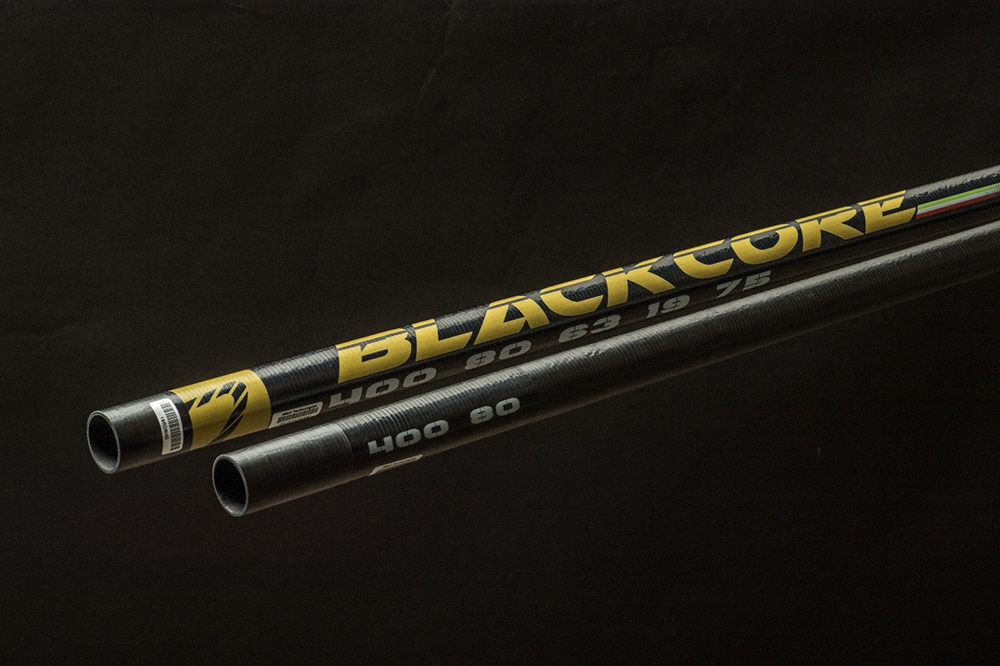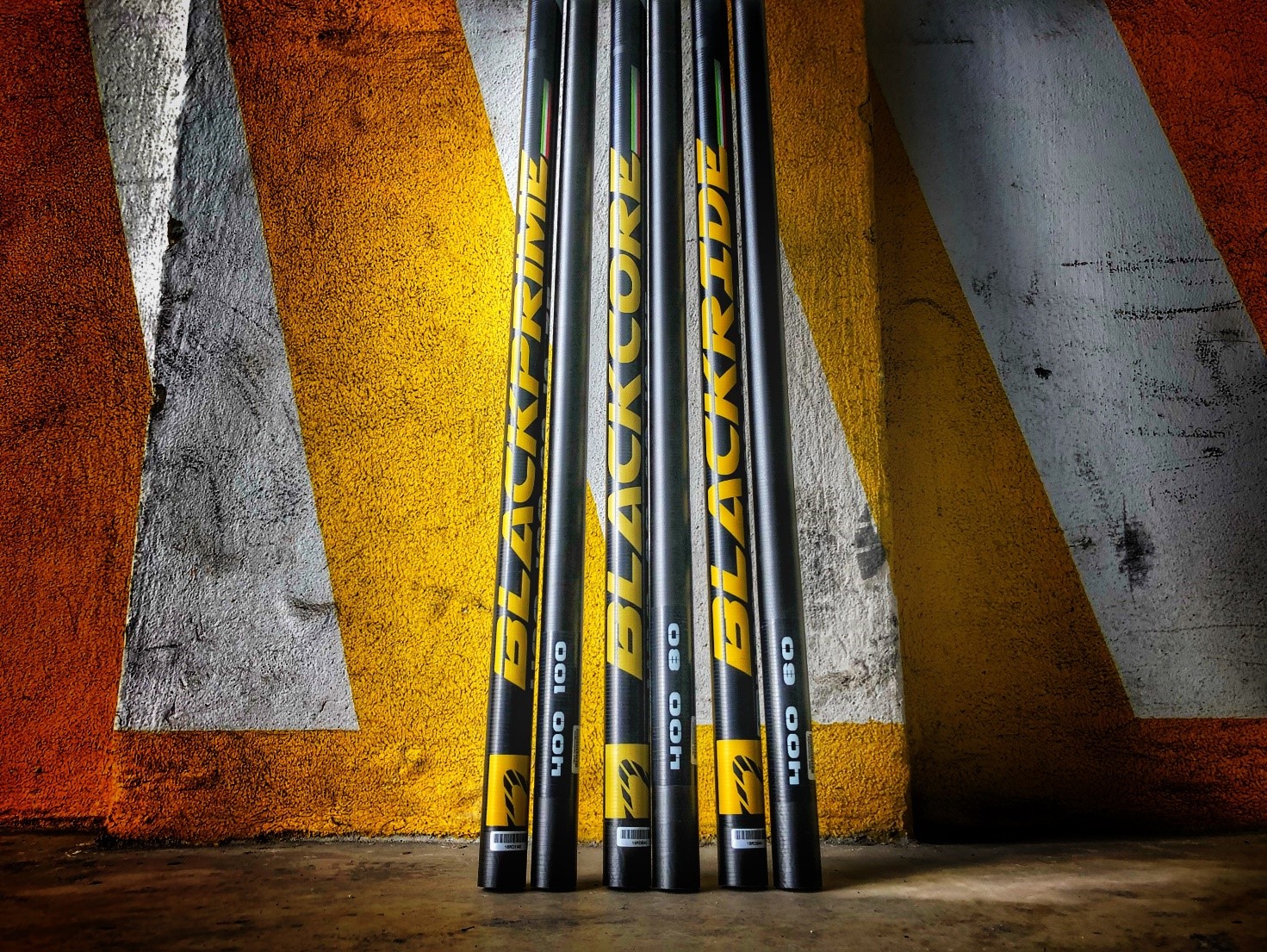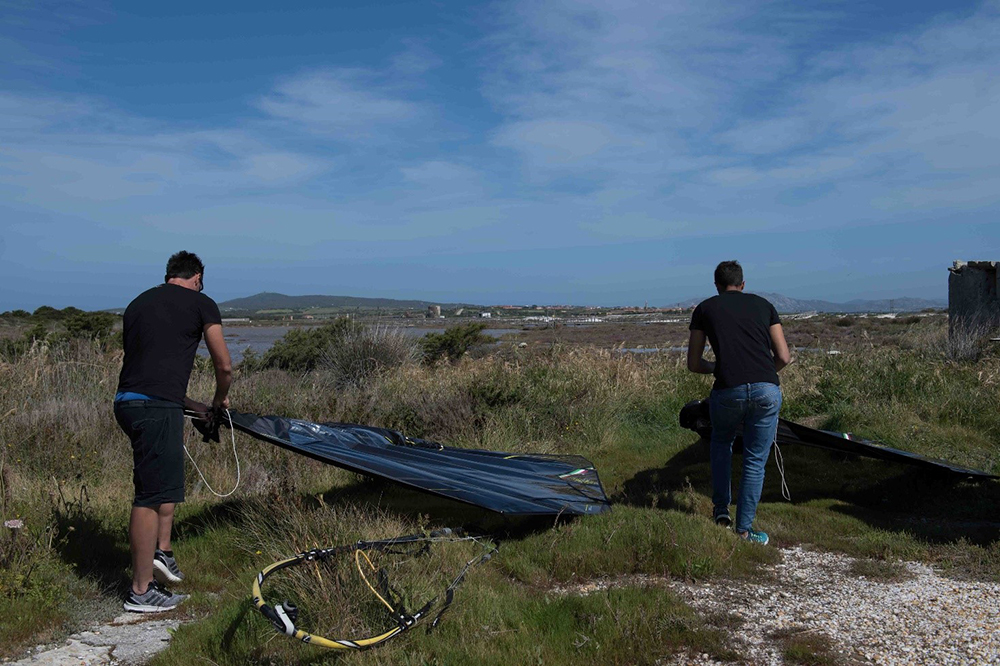PRO’S, TESTER’S and their MASTS.
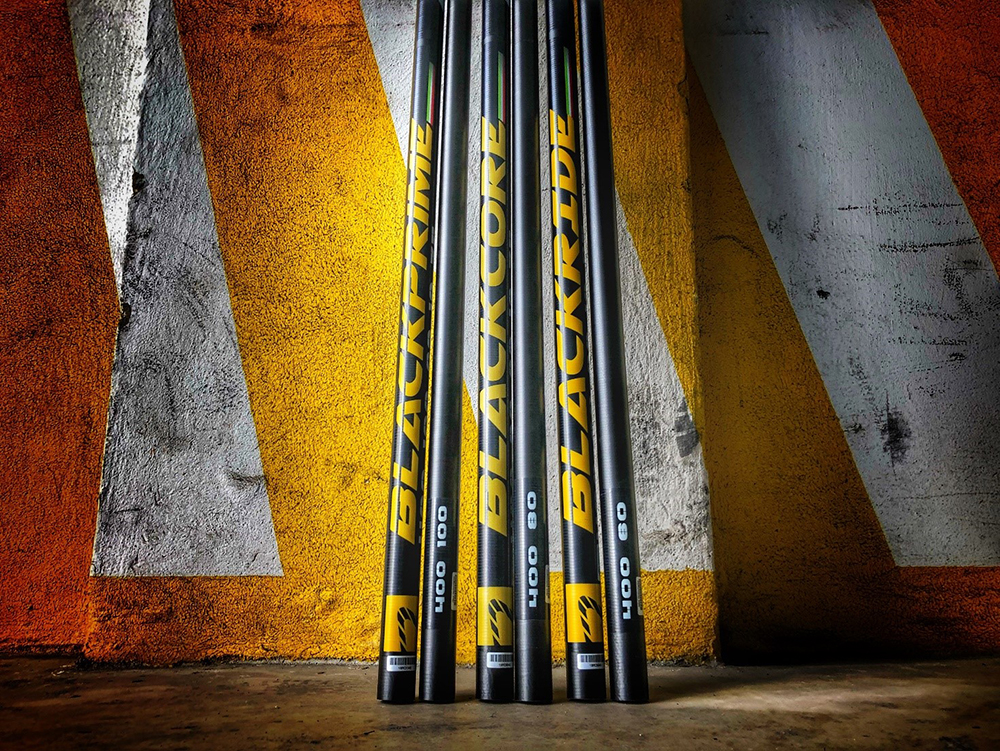
How many racing masts do you think a pro needs to have/test for a PWA season, taking into account that till now without foiling they were using 6 sails?
Normally the best riders have 3 mast per size. 1 for training. They have then their favourite mast that they use for racing, and their second favourite mast for racing in case something happens to their first mast. Others manage it with 2 per size. For my personal use I don’t test any mast, I usually take what is in the shelves in the storage. I have 6 masts for racing and then I take with me an extra 400, 430, 460, 490 for safety if I travel. You never know when you travel if they get hit and damaged or stolen or whatever. Our masts arrive with serial numbers and curves written next to them. I know also which mast each rider have, but our supplier is the best on the market, so every mast is close to be identical. Knowing which mast each rider has, if they want to try something different for a special condition, it’s easy for us to just order something different for his special need. If the new idea works good in all conditions, we could also think to than do the production mast the same. It’s now over 6 years we use the same curves, as for each length, I really think we have found ideal curves. We are more working on materials to find more reflex, more comfort and so on.
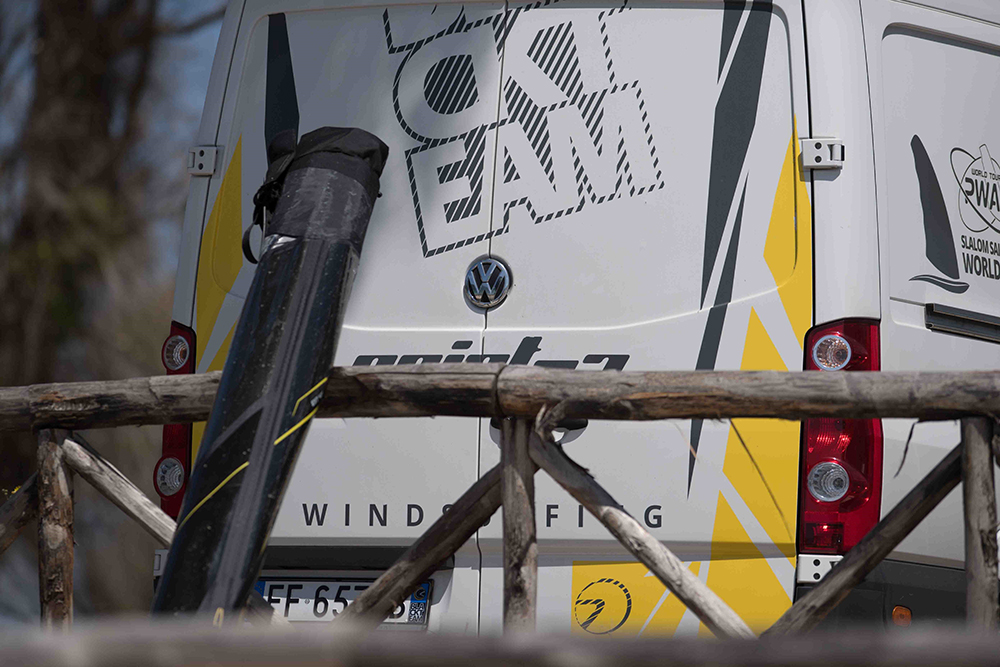
The mast, for many riders, is a crucial part in a racer’s preparation. Details are always very important. You can prepare softer or stiffer masts according to the water surface, place and condition. Otherwise the best for some is just to have the best compromise mast for all conditions and get used to use it and make the best out of it. Makes life mores simple, and simplicity could be a winner’s move. It’s now 8 years we found the curves we like in our sails. Softer bases in smaller masts to absorb the chop, and a stiff top to give stability. In longer light wind masts, we use stiffer bases for power, and softer tops to have the sail to breath more. Personally, I never like the mast when they are new. I need to use them at least 5 times, they adapt to the sail, they combine to each other, and they start working as one piece after that time. Therefore, also prefer to use one mast for training and for testing. At one point the mast loses its reflex. It become more comfortable but less reactive and crispy. This is the time that if you compete, is time to change it to have back that extra acceleration. So, it does not mean that your best mast will be the best mast forever. It will just feel more and more comfortable as it loses the nerve, but not faster. This is with all masts, even from our supplier which is surely the best on the market.
To test masts, GPS can be useful to lots of riders. I go for the feeling, or when it gets very close to have two identical products, then you need to have 2 people on the water. The GPS can give you an idea, but you should be able to feel it. If it feels easy and comfortable, it’s also fast. Normally what feels the best goes the best. On land we have all the numbers of the curves of the masts, and from there we know what to change on the mast curve to obtain what we believe will give the advantage. As a small difference is felt on the water, then we have protos produced with the different numbers of curve percentages, but with the similar ideas, and we find the best by going windsurfing. On the water, the best it to have one tester to keep all his gear the same, and the other tester to change the masts which need to be tested. Once the testers are on the water there are more aspects to be tested. How easy the mast pumps out of the jibe, the power in acceleration at low speed to top speed. The comfort and the average speed. Once between the testers the best mast is found, the testers than can do more cross over checks. Every change on the mast than needs to be used a lot before putting in production as we need to make sure it lasts! It also needs to be used few times on the water to have it loosen up before doing any testing with it.
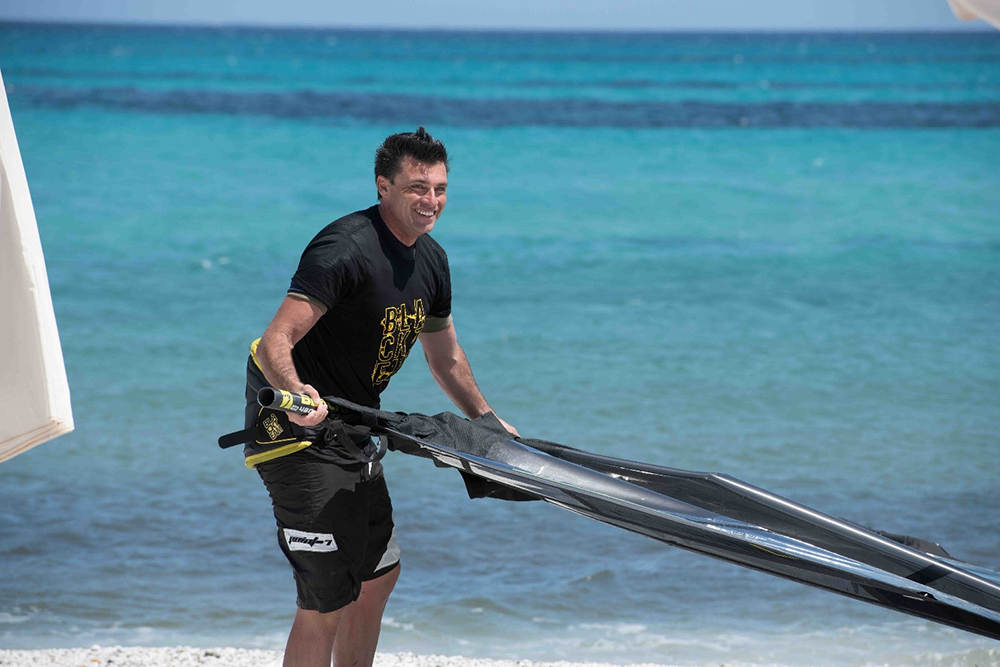
To quantify differences between one mast it’s important to have concept of what you like your sails to feel like. The sail is developed over a mast. Like a suit by a Taylor on a specific body. Anything different should just go worse if the development was done properly. So, there are 2 cases. You can use a different IMCS or curve, to bring more performance to the rig, if you feel the rig is missing something. Example softer if you need more comfort, but if it’s just a different curve, which has nothing to do with the sail, it would just work worse. How more different the mast is to the original mast used to develop the sail, it will be proportionally worse. Production masts can be different, but this depends on how the factory produces their mast. A mast can have a difference in size, materials, and labour skills. Add all 3 up, depending how more precise the 3 things are, the more identical each mast will be from one another. Even if you have a constant curve mast, the curve stiffness can be different, the way the ferrule is built can be different, the technology- Saying that a constant curve mast from a factory, is the same the constant curve mast made by another factory, it’s already not true. If the mast has a difference in percentage of 0.5%, it can be felt by a pro rider. Let’s take a base of 63% it can be felt against a base of 63.5%. 0.3 can make things also already different.
We know exactly what we like to have as curves. The curve is the difference between the top and the base of the mast. For each mast length we have a different curve to satisfy the needs in that condition. Does not mean that the same curve can work in big sails which are used in light wind and flat water, can be the same curve used in small sails, heavy chop and strong wind. So, over the years for our team we have developed a set of masts with curves which fit each sail properly for the conditions they will be used in. From there we develop our sails on. Not only for the race sail, but we do it also for all the sails in the range. So, what the team uses, comes directly from the shelves of our storage. Each rider than has its own habits\secrets on how much care they take on their racing mast. Some use their best mast only when racing and they treated better than their girlfriends!
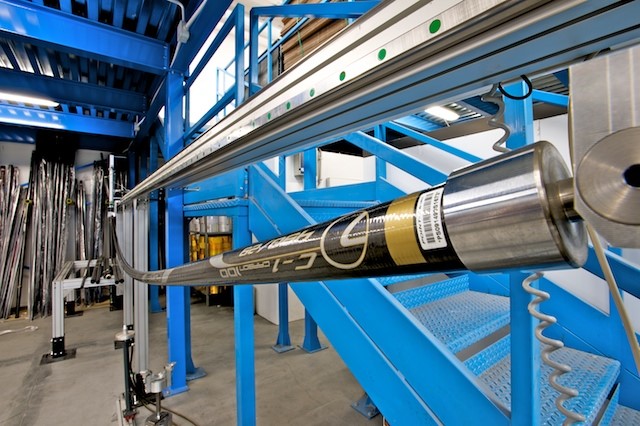
We measure the typical curve percentage and IMCS with 30kg, and this gives a reference. Things change a bit (a lot), when the mast is than put under pressure in the water and compressed in the mast sleeve. It’s not static 30kg anymore, and lots of parameters which will make a mast perform better than the other. Yes, it’s constant curve or flex top, and a 100% mast= yes, it has wheels and a petrol engine. How much horse power?, how many cc? etc etc…these are things we cannot see from looking at the product from the outside. They all look the same…but they are not…and this can open also a big chapter for the boom!
Riders sometimes get fully blinded by a best mast, but often is just that, that mast has reached the perfect bonding together with that sail after X amount of times, and it’s not easy to find that feeling on a new mast if it is not used more than one time. What our top riders do have, is in the smaller sizes like 430 and 400 a softer version of the mast. So, the curves stay the same as it’s a very fix point we have, but the IMCS can be a little softer. This is to gives them a chance to use these softer versions in extremely wavy and choppy conditions that a recreational windsurfer would not use that kind of equipment in that kind of wind. These masts are often taken out from the covers in Fuerteventura. It’s more about control than speed in that case. For the rest, whatever is best goes in production, we don’t keep secrets or special things for the team.
If you have the mast which matches the best compromise between power and control, then you have a winning mast for your sails. It’s about finding the right percentage difference between the base and the top and having a comfortable IMCS according to the needs of the sailor. A heavier sailor likes stiffer masts, and light sailor softer masts. Generally, if the combination between mast and sail is good, both sailors enjoy the same masts. A good mast can give you so much extra comfort, that allows you to keep focus on other things, rather than keeping correcting the sail stance. It translates into a lot more speed and less energy used over a day. We are talking about knots of difference. Thanks to our supplier, we don’t have bad masts!
Could we you change mast according to the conditions? Even if I would have the possibility to have for each condition a different mast, I have always preferred in my life to make life simple, by finding the best compromise mast, fin or any other setting for all conditions. This makes life easy, and let you focus more on the race, rather than stressing with equipment. I’ve been managing lots of different riders these years and had 2 kind of riders. Those who looked for the best thing for each condition, and those who took what they thought was best by using it all the time. Both type of riders had the 0.7 results. Of course, the one who did not care to change for every single condition was much more focused and relaxed on the race, the other ones were so busy changing, testing, stressing for each heat to have the best set up, but in the end, the results of both were good. The one which had the feeling he had to change mast or fin according to the conditions, would have probably done worse if he could not change, as his physiological side would have been weak, knowing he did not have his best choice on the water.
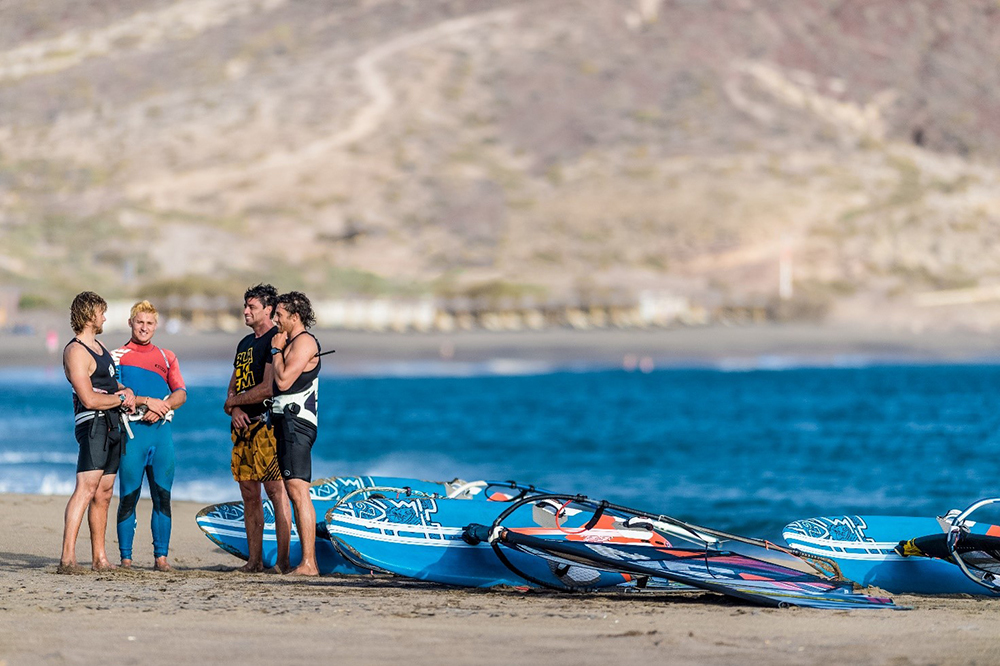
Once the right mast is found, riders take particular care of it. I don’t have the best mast as our masts are all very identical and for the reason explained above. I just try to use one for training and testing, and one for racing, but in the end it never works. I’m too busy testing gear and I have to use more masts at the same time, so it’s all mixing and that is the best. Then I’m sure the sail will not marry to a specific mast with specific times on the water. The testing is fairer! The thing that many might not know, is that a mast made with good material, if it does not break after the first 5 times on the water, it has no production failures. If it breaks after 5 times, it’s because it has been treated in a bad way. It means that it has suffered catapults, storage in the wrong environment, dropped on the ground, hit, or put in hot and cold temperatures in few seconds without a gradual temperature change. In Europe there is a 2-year warranty rule, so mast is changed with warranty even if they brake after 5 times usage, but if it does not break after 5 times, remember that your mast is ready to last till you will get tired to see it. So, it’s than the responsibility from the user to make sure that it’s kept well. The only true thing is that the mast is not giving the same performance forever. After some time, the reflex tends to slow down, so does the performance. So, if it gets pretty old, even if it does not break, if you want to boost up the acceleration of your rig, it’s good to get a new mast.
Anyway, don’t live them rigged, or if you do, make sure there is ZERO tension on them. If they are not in the sun, it’s better. Make sure that the mast inside is always clean, and not only outside. Try not to hit it, drop it, and never lend it.
A good mast is not more fragile than others, actually often other way round! A good mast is the mast which does not break with proper use, as it’s made with good materials. How windsurfing masts are made is to match the compromise to what the market needs. It needs to win the PWA slalom title, it needs to be used by a recreational sailor at the same time for many years, without breaking. It’s not a product like the tyres of Formula 1 racing. Used in one event and thrown away after that. It needs to have a pricing to be affordable for completing the rig, it needs to work for a lady of 55kg and for a man of 100kg. It needs to work in flat water and in waves. So, a good mast has a lot of responsibility and different duties. There would be a chance to make better product for racing, but it would not fit the market needs, and therefore is better to develop a high-level product, making sure that our clients can then use and enjoy.
Never cut your mast! If you need to cut a mast is either because you are working on a very new sail project and need something very different or need something from the rig that it’s not able to give with the mast you have. In case the mast at the bottom is a bit used or broken, you can cut up to 10cm and it will not change the performance of the rig as much. Better than throwing it away!
Breakages. In the last 5 to 7 years I don’t remember to have broken any mast. I broke one mast last month in Fuerteventura but was my fault. Yes, I like to admit it! I hit my ribs and cracked one or two, and I kept sailing with pain as it was too much fun due to the nice surf slalom and conditions. I fell in between the waves with the mast top, right into the sand bank. I was too slow and in pain to remove it fast in time, and a wave just pushed me and the rest of the gear to leverage to the top, and of course it snapped. Otherwise it was long. Maybe even longer. I did break test masts I’ve been given from other factories who tried to have us as clients as the product was probably not yet to its final development.
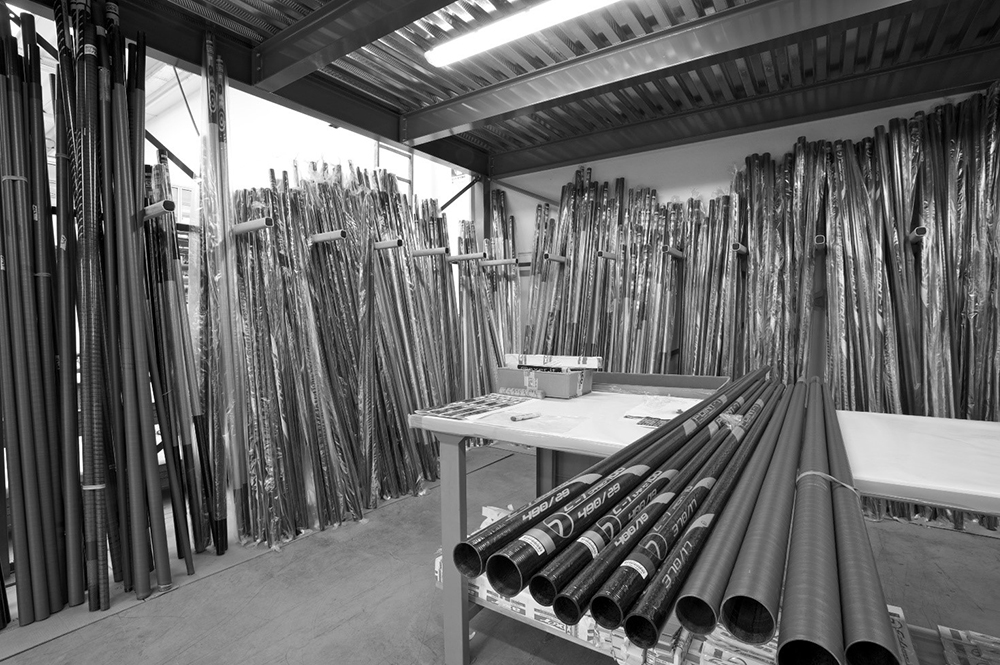
Our masts are made in Italy. Even the 30%. It would be much cheaper to go buy elsewhere, but our factory is less than 3h drive from our testing grounds, and we have bonded a very strong relationship with the factory as we both know that the best quality we can give, the less work we have later with warranty, and other useless loss of time. If you lift up our masts and feel the weight even of the 30%, you will understand why we make them all in Italy!
The masts are all black or looking the same. There are stickers which can say to be something, but who knows the truth! The priority is to be sure that the manufacturer which produced the masts, are having a top-quality check system, to assure that the resin and carbon are assembled in a very systematic way. That the material used are always the same. Skill labour, measurements, material are fundamental. Even working with the best supplier, there can be small differences. We measure all the mast which leave the factory. If the difference is not going to make our sail feel as it should, the mast is discarded. We cannot afford to have our riders or clients not fully appreciate the advantage that our rig can have.
